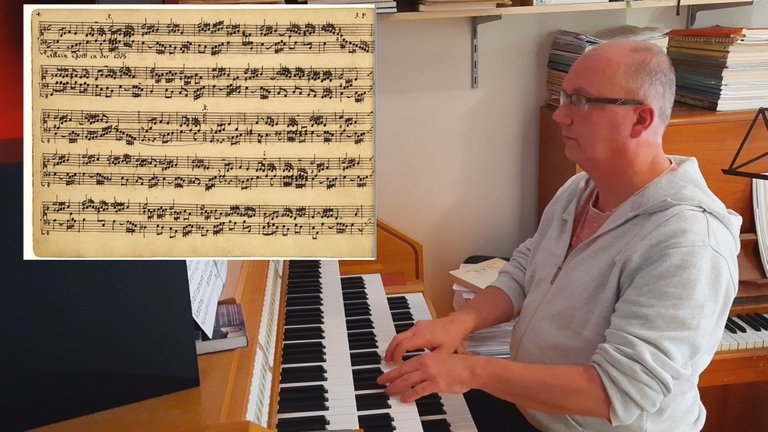
After yesterday's frivolities (https://beta.peakd.com/sgl/@partitura/sgl-solidarity-week-3-or-michael-schuetz-dance-with-me), it's back to some austere chorale prelude playing.... :-)
Having some restraints is often both a blessing and a curse. It can enhance creativity and it can limit it. In writing a choral prelude, the melody of the choral is of course leading. Whatever the composer thinks of, it has to fit within the boundaries of that melody. If the composer is somehow stuck, or out of ideas for a new form for a composition, the choral melody is there to lead the way. It sets boundaries and it leads the way.
In music, certainly classical music, form is everything. Form is not only defined by melodies, motifs or textures. It is defined as well by harmonic progression. Music should progress from a beginning to an end, and the progression should be understood intuitively. Harmonic progression is perhaps the main ingredient of intuitively defining start, middle an end of a composition. Music starts in the main musical key, called tonica. From there the music visits related keys or even non-related keys, to ultimately end on the same key it started with. All harmonic turmoil ends, and the composition feels 'finished' because of it.
A tried and very succesful procedure is to keep the harmonic development relatively simple in the first part of a composition, then have a section in which the harmonics go more frivolous, and then end with again a more simple harmonic layout in the final part of the composition. This is how the classical sonata form is layed out. And this is how choral preludes are often layed out.
The boundaries of possible harmonic frivolities in a choral prelude is set by the choral melody. After all, whatever the composer does harmonically, it has to fit the notes of the melody. It takes all of the composer's creativity to write music that fits the choral melody, and still ahs an interesting or even surprising harmonic progression. The task becomes even more difficult when the choral melody it self sets out a modulation to a different key.
An example of a choral melody that itself clearly modulates to a different key it the melody of "Allein Gott in der Höh sei Ehr". In the second half of the melody it modulates from the starting key, G major, to the key of a minor. And thus every choral prelude based on this melody has to modulate to a minor in that spot. And every one who knows that melody, knows where this is going to happen, so the modulation is expected, even anticipated and thus not surprising.
In the choral prelude I play here today, Buttstett follows of course the choral melody, and writes the expected modulation to a minor. Nothing surprising there. He saves his ingenuity for other spots in the composition. The second half starts with a sudden f natural, where everyone would expect an f sharp. And after the obligatory modulation to a minor, Buttstett writes another visit to a minor a few bars later, where it is not expected.
All in all, this choral prelude is a very nice example of creativity in constraint. And for those sensitive to it, a model for creativity in corona induced isolation.
Score available here: http://partitura.org/index.php/johann-heinrich-buttstett-allein-got-in-der-hoh-sei-ehr/
The recording was done with the Hauptwerk software and the sampleset, made by Sonus Paradisi, of the Hinsz organ in the Reformed church in the Midwolda (http://www.sonusparadisi.cz/en/organs/netherlands/midwolda-surround-sample-set.html).
Resteemed, your post will appear in the next curation post with a share for you!
Your post has been supported and upvoted from the Classical Music community (Subscribe at peakd and Steempeak) as it appears to be of interest to our community. We also support jazz and folk music posts!
If you enjoy our support of the #classical-music community, please consider a small upvote to help grow the support account!
You can find details about us below.
The classical music community at #classical-music, Peakd, Steempeak and Discord. Follow our community accounts @classical-music and @classical-radio or follow our curation trail (classical-radio) at SteemAuto!